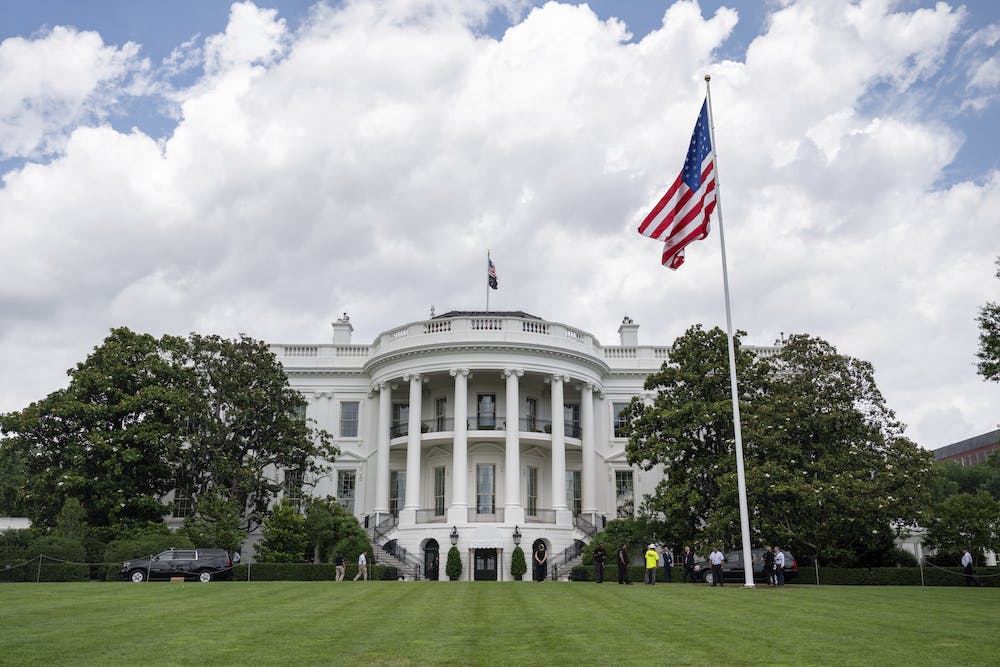Congressional Commission: Pentagon Must Implement These 5 Actions ‘Now’
“We have the ability to implement new technology, but our systems are holding us back,” Ellen Lord said.

A congressionally mandated commission proposed five major actions the Pentagon can implement immediately to improve and modernize its archaic and lengthy budget process.
The Commission on Planning, Programming, Budgeting and Execution (PPBE) Reform published an interim report laying out a total of 13 actions that can be acted on “now,” including improving information sharing between Congress and the Pentagon, consolidating budget line items and expanding PPBE analytics that would allow the Defense Department to field new technology quicker and foster innovation.
The PPBE process at DOD is known to be a long, complicated and rigid procedure that, in many instances, hinders the department’s ability to respond to emerging threats and keep up with the pace of innovation.
“The challenge always is that, particularly in DOD, the system is set up to be very risk-averse for a lot of good reasons. And it appears that every time we have had a major misstep, which usually comes out during an acquisition program, we go and put 25 Band-Aids on it that holds everything else back,” Ellen Lord, commission vice chair who formally served as the Under Secretary of Defense for Acquisition and Sustainment, told reporters at a Defense Writers Group event.
“We really have the pace of innovation far outstripping the pace of business system innovation,” she said. “We do have the capability to do things quickly. The issue is we have not been able to scale those to really make a difference across the department. … So what we’re trying to look at is all the mechanisms we could sort of echo and amplify throughout the entire system to allow us to move quickly to take this innovation and get translated to true warfighting capability.”
One of the key areas the commissioners call attention to — and that the Pentagon can act on now — is improving the PPBE business systems and data analytics.
The commission recommended that the DOD continues to consolidate systems used by the Pentagon’s comptroller and Cost Assessment and Program Evaluation (CAPE) office that have “historically used separate databases and separate tracking systems as they develop the defense program and budget.”
In addition, the report recommended improving the ways and processes that the Pentagon uses to share information with Congress. Currently, the Pentagon sends thousands of PDF files or hard copies of budget information to Congress, and vice versa. The commissioners want to see both unclassified and classified enclaves established where they can transmit information in a manner that is “searchable, sortable and able to be updated electronically by both the Congress and DOD.”
“We need a cadence of communications that’s much more data-driven between DOD and the Hill. The frequency for the dialogue, if you will, could be enabled by electronic transmission of data that is consistent across the military services as well as the agency. And then the ability to communicate back and forth in secure enclaves with consistent budget information,” Lord said.
The report also included 10 recommendations that still require stakeholder feedback. The final report is scheduled to be delivered in March. “The real work is ahead of us,” Lord said.
One of the recommendations the commissioners are pursuing is a different approach to what is known as “colors of money.” The term refers to DOD’s method of putting money into different categories during its budget planning processes, such as operating, research and development, infrastructure or emergency response expenses, among other categories.
The recommendation would allow some organizations to use the same color money to cover all of their expenses, which would promote innovation and adaptability at the DOD.
“If it was an acquisition organization, it might be allowed to pay for all of its expenses using procurement, even if some of it would normally have been research or operating money,” said Bob Hale, the commission chair who previously served as the DOD chief financial officer, at the Defense Writers Group briefing.
“That would make it less common that programs are slowed because the program manager hasn’t been able to foresee exactly how much money they needed in a procurement pot versus the research pot. This would have to be accompanied, I think, by a set of rules that provided for congressional oversight, or it’s not going to be acceptable,” Hale added.
While hopeful, the commissioners acknowledged that the Pentagon might have a “bandwidth problem” as it implements the actions outlined in the report.
“They’ve got so much going on. And some of the key areas we would have to take charge making some of these changes, I mean, particularly the comptroller’s office, but CAPE as well,” Hale said.
“I think they’ll have to attach some priorities and say, ‘Hey, this is the one we’re gonna go after first.’ And I also hope they can reach out and find some ways to give themselves some additional help. I don’t expect to see a lot, frankly, in the legislation this year,” Hale added.
The Pentagon expressed support for the report. Deputy Secretary of Defense Kathleen Hicks in a statement said she is “directing the department to adopt all actions that can be implemented now, as recommended by the Commission and within its purview.”
“We laid out the five broad goals. … I’ve highlighted one that I think is particularly important,” Hale said. “Finding ways to improve PPBE’s ability to foster innovation and to adapt more quickly to changing requirements. It’s hard, but I think it would be a particularly high payoff area.”
This is a carousel with manually rotating slides. Use Next and Previous buttons to navigate or jump to a slide with the slide dots
-

DOD Turns to Skills-Based Hiring to Build Next-Gen Cyber Workforce
Mark Gorak discusses DOD’s efforts to build a diverse cyber workforce, including skills-based hiring and partnerships with over 480 schools.
20m listen -

AI Foundations Driving Government Efficiency
Federal agencies are modernizing systems, managing risk and building trust to scale responsible AI and drive government efficiency.
40m watch -

Trump Executive Order Boosts HBCUs Role in Building Federal Tech Workforce
The executive order empowers HBCUs to develop tech talent pipelines and expand access to federal workforce opportunities.
3m read -

Navy Memo Maps Tech Priorities for the Future Fight
Acting CTO’s memo outlines critical investment areas, from AI and quantum to cyber and space, as part of an accelerated modernization push.
5m read -

DOD Can No Longer Assume Superiority in Digital Warfare, Officials Warn
The DOD must make concerted efforts to address cyber vulnerabilities to maintain the tactical edge, military leaders said at HammerCon 2025.
4m read -

New NSF Program Cultivates the Future of NextG Networks
The agency’s new VINES program looks to tackle key challenges like energy efficiency and future-proofing wireless tech.
21m watch -

Marine Corps Operation StormBreaker Slashes Software Delivery Timelines by 17x
New program aims to deliver critical digital capabilities to warfighters at the "speed of relevance" by overhauling traditional processes.
4m read -

Tracking CIOs in Trump's Second Term
Stay informed on the latest shifts in federal technology leadership as new CIOs are appointed and President Trump's second term takes shape.
6m read -

DHA CDAO Spearheads Master Data Catalog to Boost Transparency
Jesus Caban plans to boost DHA's data maturity through a new master data catalog, governance frameworks and inventory of tech tools.
5m read -

IHS Prepares to Deploy PATH EHR at Pilot Sites in 2026
IHS targets PATH EHR pilot in 2026, emphasizing governance, collaboration and interoperability as key pillars of the modernization strategy.
4m read -

Trump Orders Spark Government-Wide Acquisition Overhaul
As Trump pushes for a faster, simpler procurement system, agencies are leveraging AI and adapting strategies to meet new requirements.
5m read -

IRS Makes Direct File Code Public as Lawmakers Debate Program’s Fate
The agency sees the Direct File source code as beneficial to government digital services despite what happens with it in proposed budgets.
5m read
















